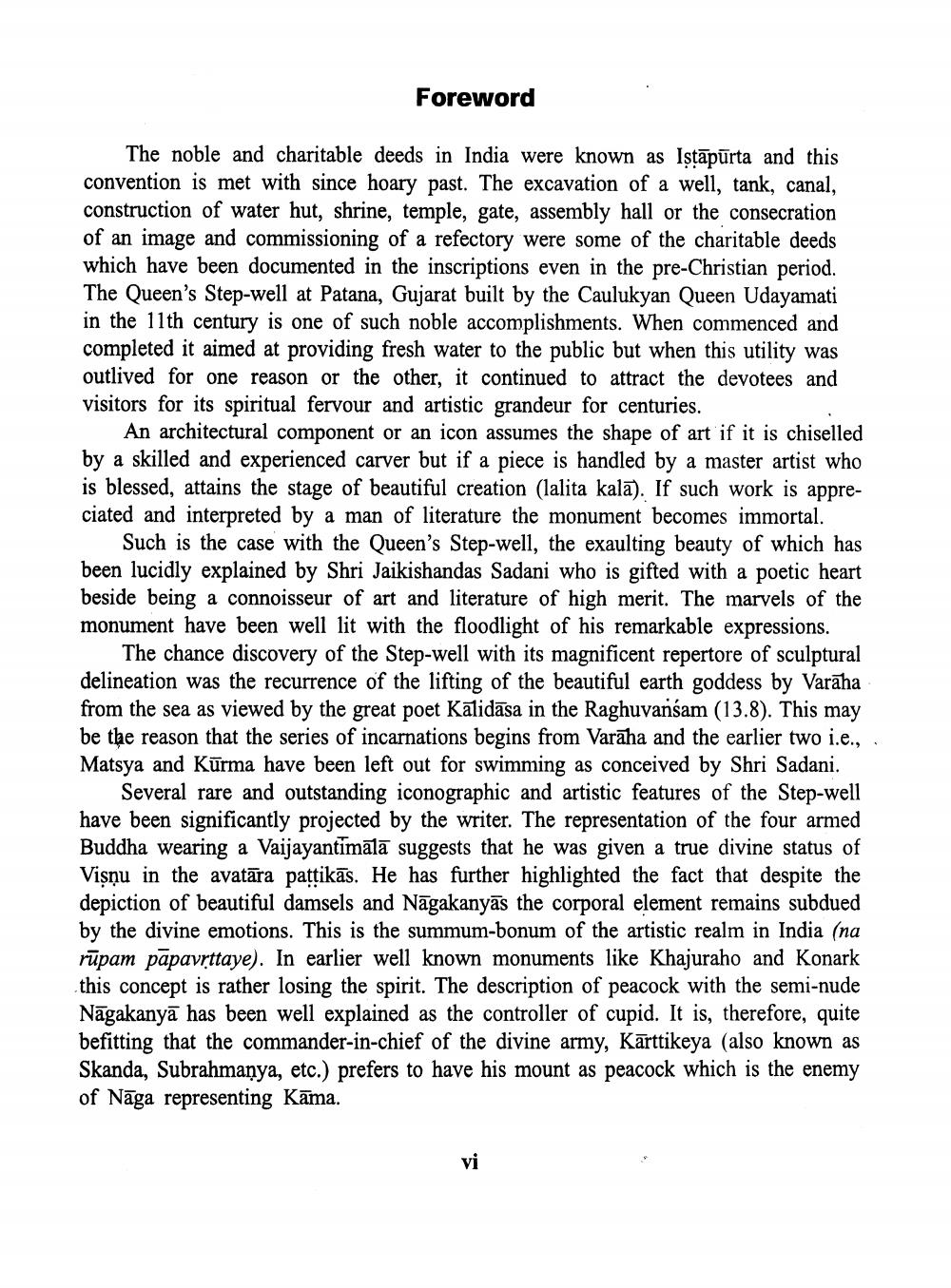Book Title: Underground Shrine Queens Stepwell Patan Author(s): Jaikishandas Sadani Publisher: B J Institute of Learning & Research View full book textPage 7
________________ Foreword The noble and charitable deeds in India were known as Istāpūrta and this convention is met with since hoary past. The excavation of a well, tank, canal, construction of water hut, shrine, temple, gate, assembly hall or the consecration of an image and commissioning of a refectory were some of the charitable deeds which have been documented in the inscriptions even in the pre-Christian period. The Queen's Step-well at Patana, Gujarat built by the Caulukyan Queen Udayamati in the 11th century is one of such noble accomplishments. When commenced and completed it aimed at providing fresh water to the public but when this utility was outlived for one reason or the other, it continued to attract the devotees and visitors for its spiritual fervour and artistic grandeur for centuries. An architectural component or an icon assumes the shape of art if it is chiselled by a skilled and experienced carver but if a piece is handled by a master artist who is blessed, attains the stage of beautiful creation (lalita kala). If such work is appreciated and interpreted by a man of literature the monument becomes immortal. Such is the case with the Queen's Step-well, the exaulting beauty of which has been lucidly explained by Shri Jaikishandas Sadani who is gifted with a poetic heart beside being a connoisseur of art and literature of high merit. The marvels of the monument have been well lit with the floodlight of his remarkable expressions. The chance discovery of the Step-well with its magnificent repertore of sculptural delineation was the recurrence of the lifting of the beautiful earth goddess by Varāha from the sea as viewed by the great poet Kālidāsa in the Raghuvansam (13.8). This may be tạe reason that the series of incarnations begins from Varāha and the earlier two i.e., . Matsya and Kūrma have been left out for swimming as conceived by Shri Sadani. Several rare and outstanding iconographic and artistic features of the Step-well have been significantly projected by the writer. The representation of the four armed Buddha wearing a Vaijayantimālā suggests that he was given a true divine status of Vişņu in the avatāra pattikās. He has further highlighted the fact that despite the depiction of beautiful damsels and Nāgakanyās the corporal element remains subdued by the divine emotions. This is the summum bonum of the artistic realm in India (na rūpam pāpavrttaye). In earlier well known monuments like Khajuraho and Konark this concept is rather losing the spirit. The description of peacock with the semi-nude Nāgakanyā has been well explained as the controller of cupid. It is, therefore, quite befitting that the commander-in-chief of the divine army, Kārttikeya (also known as Skanda, Subrahmanya, etc.) prefers to have his mount as peacock which is the enemy of Nāga representing Kāma.Page Navigation
1 ... 5 6 7 8 9 10 11 12 13 14 15 16 17 18 19 20 21 22 23 24 25 26 27 28 29 30 31 32 33 34 35 36 37 38 39 40 41 42 43 44 45 46 47 48 49 50 51 52 53 54 55 56 57 58 59 60 61 62 63 64 65 66 67 68 69 70 71 72 ... 74
